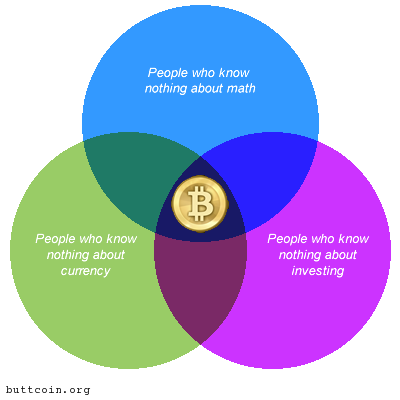How a central authority attempted (and failed) to regulate Bitcoin
Back during the largest of the Bitcoin bubbles, and even to this day, the largest Bitcoin “exchange” is the Magic the Gathering Online Exchange (MtGOX,) a website where the vast majority of USD to Bitcoin transfers takes place and the largest Bitcoin “authority,” so to speak. To many, MtGOX was†the hub for Bitcoin activity. It may still be. I’m not going to visit a website called the Magic the Gathering Online Exchange to find out.
As the price of Bitcoins was falling like a rock dropped from a burning zeppelin, MtGOX enacted various “walls” in an attempt to halt the precipitous fall in the “value” of Bitcions. These, of course, did not work, but it’s hilarious how those who screech to the heavens and back about removing central authorities from currency and babble on about fiat this and fiat that allowed and probably encouraged this occurrence. Let’s take a closer look at how the Magic the Gathering Online Exchange admins attempted to rig Bitcoin prices to save their investment:
Imagine, for a moment, that you’re terribly foolhardy and have spent real money on ten thousand Bitcoins. You take a moment to meander over to MtGOX to play Internet Day Trader with your fake money and find the following outstanding buy orders:
- 100btc @ $15.50
- 50btc @ $15.65
- 30btc @ $15.52
- 30000btc @ $14.95
What this means is that you could sell your play money to other suckers for around $14.95. The first 180 Bitcoins would, of course, sell at the higher prices, but the vast majority will go for the lowest listed price. Someone out there believes for some misguided reason that Bitcoins are worth $14.95 and is willing to pay that for a lot of them.
Now let’s imagine that 30000 Bitcoin wall is no longer there:
- 100btc @ $15.50
- 50btc @ $15.65
- 30btc @ $15.52
You can sell your first 180 Bitcoins immediately for the prices above, but then you’re still stuck with 9,820 of the damned things that you no longer want because you’ve come to your senses and realized this was all a terrible idea and you want out. You’re stuck with them until someone else comes along and places an order to buy some, and if they’re smart (and some of them actually are, they’re busy scamming the rest of the Bitcoiners,) they will split their buy order into small batches, each with an increasingly lower price, screwing you out of whatever value everyone agrees your hashes and bits and whatnot have.
This happens in the real stock markets too, but the amount of large companies involved ensures that only the little day trading guy gets screwed while the market itself doesn’t melt down. Large standing buy orders help to stabilize prices and without them one would see the hilarious roller coaster prices that Bitcoin is prone to having.
Now that we know all this, we can look at MtGOX when Bitcoin prices were tanking and see that in our above example, you wouldn’t have actually been able to sell at $14.95, because the 30,000 Bitcoin order was a fake wall and the moment the orders at $15.52 were fulfilled, the orders at $14.95 would disappear and quickly be replaced by another at a lower price. This happened numerous times and at any given time MtGOX’s market depth would show ten to fifty thousand Bitcoins’ worth of orders within one dollar of the current price. As the price plummeted, say by $3 within an hour, we would see that only Bitcoins in the volume of one to five thousand had been traded during that period of time, which would indicate that the large order had been pulled and replaced with another order for tens of thousands of Bitcoins just below the current price.
This happened over forty times during Bitcoin’s freefall from $20 to $5. The invisible hand of the free market at work!
Special thanks to SA forum goons†Shifty Pony†and†I Greyhound†for explaining all this garbage so I could paraphrase it here.


